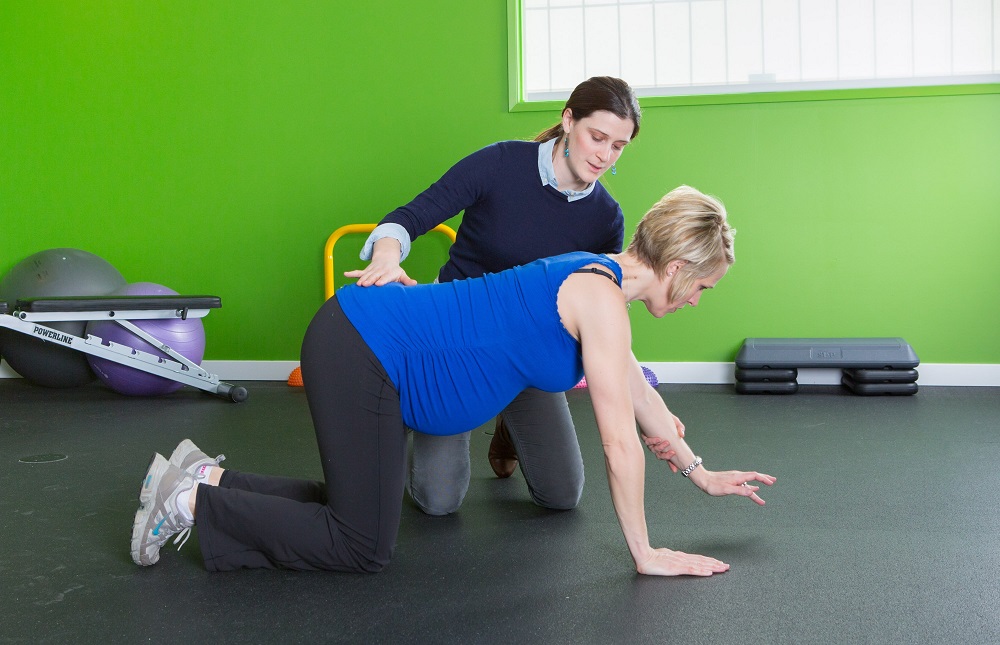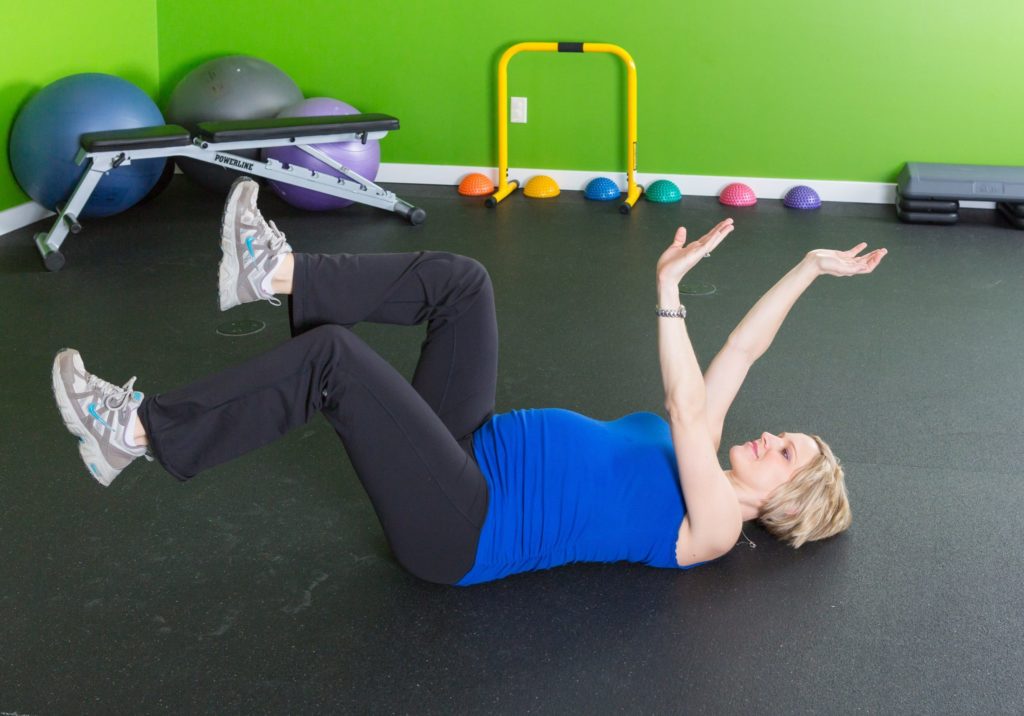How to survive pregnancy with a hip replacement
Hip replacements (partial or complete) may be needed for women of childbearing age for a variety of reasons, including hip disease (such as arthritis and avascular necrosis) or congenital malformation (like hip dysplasia). As far as surgeries go, it is pretty intense. Receiving and recovering from a hip replacement can be a life-changing experience. But how could this life-changing joint replacement potentially impact another intense life-altering phase of your journey… as in.. how does a hip replacement impact your baby-making plans and experience?
Let’s get one thing straight and clear first. Having a hip replacement does not preclude you from having a baby, nor does it automatically depict your mode of delivery. The survivability of the hip transplant itself has been very well demonstrated during pregnancy and delivery 1,2,5,6.
That being said, several studies have shown some differences in conception rates, birth outcomes, and delivery method in women following hip replacements 1,5,6,7,8. Some of these differences are likely due to the underlying condition that made the replacement necessary, as well as other psychosocial factors involved with those conditions. It is not the topic of this blog, but it is worth a deep dive if you are in the decision-making phase of your hip replacement journey. What I want you to take away from this blog is that a hip replacement is not a contraindication to vaginal delivery or to a healthy, happy pregnancy 2,3,4,5,6,8.
Hip replacement is, however, a really good reason to go above and beyond in your physical preconception preparations and physical health support during pregnancy (and before and after).
Pregnancy is demanding. Increased weight gain, a forward shift in centre of gravity, and a gradual increase in connective tissue laxity are all big challenges on your physical body, fitness level, postural stability, and motor control. Now add an invasive surgery and recovery on top of that. Hip pain is very common in a “normal” pregnancy but increases to 60% in women who have had a previous hip replacement 5. Obviously, your hips are not operating in isolation, so we must also consider low back, pubic symphysis, and pelvic girdle pain as potential players here as well.
I’m not telling you this to scare you. I’m telling you this to motivate you! You do not need to be one of those statistics. Knowledge is power. Smart exercise prescription and supportive manual therapy can help prepare your body for baby and keep you feeling healthy and strong during pregnancy.
- Do it right the first time. If you are currently doing some reading as you prepare for a hip replacement, you have a golden opportunity to get the work in now. Prehab, rehab, then do some more. Find a practitioner who works with post-surgical rehab and do everything they tell you to do. Building a strong body BEFORE you are facing the demands of pregnancy will pay in dividends.
- Perinatal experience was not discussed with you during your hip replacement? You are not alone. It is not currently part of the surgical consent discussion or recommendations for most women. Don’t worry. You are not too late.
A note on stability and motor control after hip replacement
After surgery, you are not just rehabbing the strength and fitness of your muscles. You essentially have to train your brain to remap your body. The capacity of your nervous system to initiate and regulate movement is called Motor Control. After surgery, this is a big part of what you need to work on to restore normal function. During pregnancy, any compensations to your body’s automatic stability and motor control processes are going to be challenged. This is relevant to all pregnant women, but even more so if there is any surgical history.
Where do I begin?
If you are years out from your surgery and either currently pregnant or planning to be, here are some exercise to get you started. If you are preparing for or fresh from surgery, PLEASE seek out individualized and supervised guidance by an experienced professional (PT, DC, or kinesiologist). There are A LOT more considerations and mistakes are much higher consequence during the early months after surgery.
Core
When I say core, I mean your functional capacity to create and maintain intraabdominal pressure efficiently and automatically. We are not talking crunches here. If you have no clue what I am talking about, I recommend you seek out a BirthFit (like Dr Anna Marie) or DNS (like Dr Amanda) provider to guide you along.
- Dead Bugs – An oldie but a goodie. Be strict on form!!
- Once you have mastered this one, move on to a Bird-Dog.
- Supine isometric resisted hip flexion – I’m sure there is a fancy name for this one, but I am not familiar with it. Basically, lay on your back in a “chair” position and push your quads into your hands.
Glutes
Your butt, back, and hips work together. (For those of you who like to show off big words, it is called the Lumbo-Pelvic-Hip Complex.) Training your nice, strong, glute muscles to do the work takes a load off your back and provides stability for your hips and pelvis.
- Glute Bridge
- Bilateral Glute Bridge – First try with both feet down. Try holding (with your glutes engaged) for 10 seconds rather than pumping. I recommend that you squeeze something in between your knees (like a yoga block or foam roll or whatever comparable kid toy you have laying around) or pushing your knees out (into a band, scarf, belt, or partner). This will help you engage your core and stabilization muscles more automatically before getting your big mover muscles working.
- Single-leg/Scissor Glute Bridge – Once you have the standard glute bridge mastered, try it with one leg. This will help strengthen your weak side more directly. Try to keep your hips level and shoot your knee to the ceiling.
- Standing Banded Hip Extensions – Are you already into pregnancy and the idea of getting up and down off the ground is a daunting barrier to doing exercise? Try standing hip extensions, with or without resistance. You can do this with any kind of resistance band. I usually coach to do them putting the band around both ankle so you can use the opposite for stability and do them anywhere. Please hold on to something so that this is not primarily a balance exercises, especially if you are in your third trimester.
Lateral Hip Stability
Training stability in your “side to side” body is excellent fall prevention and is a common weakness post-surgically and prenatally.
- Isometric Hip Hikes – You can inject these very easily into any part of your day. Plus they are standing (great for late pregnancy). Try holding for 45 seconds.
- Fire Hydrants – Be strict on form, similar to the Bird Dog.
- Monster walks and standing banded hip abduction – Feel the burn.
Considering the incredible physical changes that occur during pregnancy, it is not hard to imagine how pregnancy may impact biomechanical stresses on the hip joint, with or without a surgical implant. It is comforting to know that hip replacements last well through pregnancy and that they do not depict your mode delivery. That being said, there is currently no standard guidance for women preparing for pregnancy and delivery after hip replacement. I believe (and have experienced with women following complex hip replacements and dislocations) that exercise rehab and manual therapy can completely shift the experience of pregnancy from something that needs to be survived to a journey that can be savoured and enjoyed. <3
References
- McDowell C, Lachiewicz P. Pregnancy after total hip arthroplasty. J Bone Joint Surg Am 2001;83(10):1490-1494.
- Meldrum R, Feinberg J, Capello W, Detterline A. Clinical outcome and incidence of pregnancy after bipolar and total hip arthroplasty in young women. J Arthroplasty 2003;18(7):879-885.
- Monaghan J et al. Pregnancy and vaginal delivery following bilateral total hip replacement. Our J Obstet Gynecol Reprod Biol. 1987 Nov;26(3):261-4.
- Ostensen M. Hip prostheses in women of fertile age. Consequences for sexuality and reproduction. Tidsskr Nor Laegeforen. 1993 May 10;113(12):1483-5.
- Sierra R, Trousdale R, Cabanela M. Pregnancy and childbirth after total hip arthroplasty. J Bone Joint Surg Br 2005;87(1):21-24.
- Stea S, Bordini B, De Clerico M, Traina F, Toni A. Safety of pregnancy and delivery after total hip arthroplasty. J Womens Health 2007;16(9):1300-1304.
- Uotila J, Pregnancy outcome in women after total hip replacement: A population-based study, European Journal of Obstetrics and amp; Gynecology and Reproductive Biology (2019)
- Yakici Y, Erkan D, Zuniga R, Bateman H, Salvati E, Magid S. Pregnancy outcomes following total hip arthroplasty: a preliminary study and review of literature. Orthopedics 2003;26(1):75-76.




